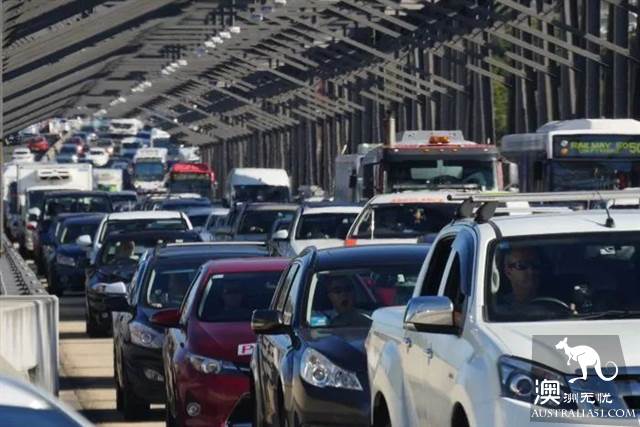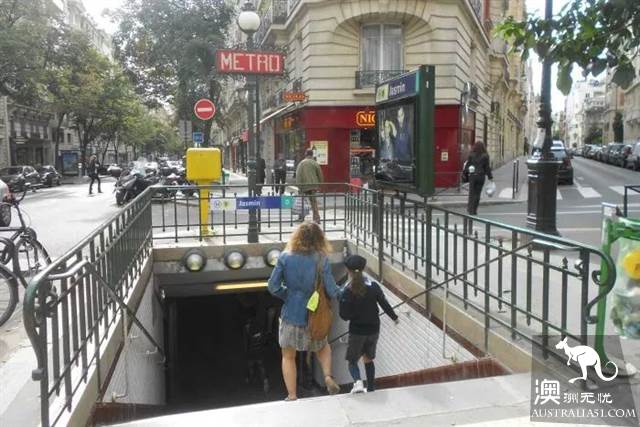
In Sydney, commuters see this every day. Graph: Luke Rosen
Sydney residents face a lot of traffic problems every day, from congested roads to overcrowded and delayed train. These problems persist and seem to get worse.
Sydney people often envy European cities with good subway systems.
People want to know why there is such a big problem traveling in our city, and whether it is due to poor traffic planning.
Congestion is a part of city life
The first thing to realize is that congestion and congestion are part of urban life around the world and will not go away.
These problems are due to travel demand exceeding the supply of infrastructure and transport services during peak hours.
It is possible to fully address congestion and congestion by building more infrastructure and providing more train and bus services, but this is unlikely to happen because of the lack of economic benefits.
This is similar to queue during peak supermarket hours-these queues can be completely avoided by adding more cash registers, but it also means that many cash registers are idle for most of the day. So adding more cash registers is not a good investment.
In other words, congestion and congestion on the train are indicators of the efficient use of existing infrastructure.
Moreover, there is not enough room in cities to continue to build more infrastructure unless they go underground at huge costs.
It's all about density.
Transport planning and infrastructure investment should not be independent from urban planning.
The city blueprint for European cities was built in an era when cars were not yet available, making them relatively compact and dense. Building train and subway systems in compact and dense cities is ideal because a station can serve many people.

Sydney people often envy the subway system of European cities, such as the Paris subway. Figure: Wiki
Sydney, by contrast, is a relatively new city. Like many American cities, urban areas other than CBD are wide and dense, due to urban planning. Urban design, which relied on cars at the time, was not considered a problem.
Low density makes it impossible to develop dense rail or subway lines throughout the city. As a result, Sydney, at least outside the CBD, relies heavily on road transportation of cars (and buses).
Unfortunately, cars are one of the least efficient modes of transportation from the point of view of the space they need. The UN's economic and Social Commission for Asia and the Pacific estimates that a 3.5m wide lane can carry only about 2000 people per hour, while trams can carry about 22000 people per hour and the train can carry 80,000 people or more per hour.
According to Charting Transport, London's population density (80 people per hectare) and Paris (133 people per hectare) are significantly higher than Sydney's (36 people per hectare), making transport planning very challenging for Sydney.
Without sufficient density, a dense train or subway network would not be feasible on the economic, so Sydney's public transport would remain relatively inefficient.
Sydney shouldn't give up the tram.
In many areas, it is more feasible to set up a fast network of trams and buses, both of which can carry about 20,000 people per hour in 3.5 meters of driveway.

Sydney decided to dismantle its massive tram network in the 1960s, when the number of trams in Sydney was three times that of Melbourne today. Graph: City of Sydney
It is therefore a pity that Sydney decided in the 1960s to dismantle the extensive tram network in order to give cars more road space, when the number of trams in Sydney was three times that of Melbourne.
Recently in Sydney, trams have rekindled interest, and many new tram lines are under construction or planning.
The rapid growth of Sydney's population should be addressed not by continuing to expand borders, but by increasing density in specific areas where conditions are in place to build and provide high-quality public transport services.
The current government has identified such growth areas in Sydney, including corridors between CBD and Parramatta, and along the Sydney subway between Chatswood and Sydenham. These new developments do not significantly change the existing train and subway system network structure, still maintain a few trunk lines only in some stations (such as Central) to connect the status quo.
This makes the network relatively vulnerable to interference.
There are many networks of crossing lines and route choices, such as London and Paris subway networks, that can provide more powerful transport services.
Build a house on top of train Station
Expanding the network will inevitably bring huge costs, but it can be accelerated by a method known as "value extraction", which has been successfully applied in Japan and Hong Kong and has attracted interest in Australia. The rationale is that new trains and subway stations increase the value of nearby land by making it easier for residents and businesses to travel.
By developing new projects around the train station and charging landowners, real estate developers and businesses to extract the value of this growth, government could partially fund the cost of building new trains and subway lines.
For example, an apartment worth five hundred thousand yuan may become even more valuable because of a new station nearby. This added value is reasonable to return to government rather than to increase the developer's profits.
Building more roads is not a good idea.
An important question is whether government should invest in new major roads. As driving is an inefficient mode of transport, government should encourage people to use public transport as much as possible.
Building more roads actually means driving becomes more attractive and could hinder people from travelling on public transport.
By contrast, investing in public transport could encourage more travelers to use public transport, thereby reducing the number of vehicles on the road, which would also benefit those who rely on cars.
This does not mean that roads should not be built at all, but at least public transport should be emphasized in order to make more efficient use of urban space.
Far from car-oriented cities
It is clear that Sydney, like other Australian cities, is car-oriented. At the same time, it is well known that car-centric urban planning is unsustainable in the long run.
For the vision of the future, everyone wants to move smoothly on their own self-driving cars, which is impossible because there is not enough space in the city to accommodate all of these cars.
However, auto-sharing cars and automatic buses will be useful to help travelers to and from the train station.
Sydney's transportation system needs a huge public transport network as a backbone.
This means that in addition to infrastructure investment, government needs to provide more incentives to encourage people to use public transport and reduce self-driving.
In addition, there should be more tax incentives, such as allowing the payment of public transport costs or the purchase of bicycles through salary swaps (salary scrifice), to replace existing schemes that normally allow only salary swaps to buy cars.
Sydney will be a livable city with efficient transport systems only if people are willing to give up inefficient personal road space and government is willing to build a public transport network through a variety of means.
Dr. Michiel Bliemer is head of Transport Planning and Modeling at the Institute of Transport and Logistics, University of Sydney Business School.
Article: Michiel Bliemer / published: ABC News / Compiler: Australian House Exchange